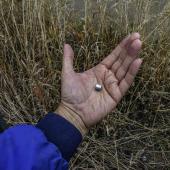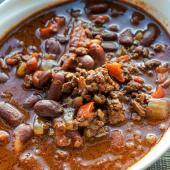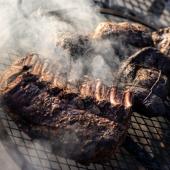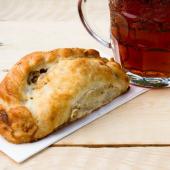Kitchen Guy: Duck or Confit
Few things in this world make me happier than a perfectly cooked duck breast. Actually, one of the things that makes me even happier is the fat that renders from the duck breast while it’s being seared. I’ll get to that a bit later.

Regrettably, duck breast isn’t the easiest thing to find in the supermarket. That baffles me, because it’s one of the easiest things to cook. Furthermore, it’s safer to handle than chicken or turkey, as it does not contain the same bacteria that other poultry does so there isn’t the same danger of cross-contamination. Also, the preferred serving temperature is medium rare (about 135⁰, as opposed to 165⁰ for chicken and turkey), which you can never do with chicken or turkey.
There are two hard-and-fast rules I have for cooking duck breast. First, you must score the skin with a very sharp paring knife, making a diamond pattern and taking care not to pierce the flesh. Second, a well-seasoned cast iron pan can’t be beat for searing the skin side, then turning and finishing on the stove top. You should also be aware that because of the amount of fat that renders from the duck, the cooking process could be smoky, so make sure your kitchen is well-ventilated.
As a side note, there’s an opportunity to use succulent Flathead cherries in the sauce as an accompaniment.
Now for that duck fat I mentioned earlier: Be sure to save the rendered duck fat. You can filter it if you like, but I use it just as is to fry potatoes. You will never taste anything better than duck-fat fried potatoes. That’s a promise.
PAN-SEARED DUCK BREAST
with Port-Cherry Sauce
RECIPE
2 6 oz. duck breast halves
2 Tbsp chilled butter
1 large chopped shallot
½ cup low-sodium chicken broth
10-12 pitted cherries, halved
2 Tbsp port wine
1 Tbsp honey

METHOD
Score the skin of the duck breasts with a sharp paring knife in a diamond pattern and reserve the breasts in the refrigerator.
Melt half the butter in a skillet (I recommend a cast iron pan) over medium high heat. Salt and pepper the duck, then add skin-side down and cook until the skin is browned and fat renders. Carefully pour out most of the rendered fat, then turn over to cook until desired doneness (I prefer medium rare). You can also finish the second side in your oven, set to 350°. A meat thermometer should register about 135°. Tent the meat with foil to keep it warm while you make the sauce.
Pour off more of the drippings until you have about 2 Tbsp left. Add the chopped shallot and stir for half a minute, then add the broth, the cherries and the honey. Carefully add the port off the heat so that it does not ignite. Let the sauce reduce, then whisk in the remaining butter. Season with salt and pepper to taste.
Slice the duck breasts on the diagonal and fan out on plates, then spoon the sauce over.
OR TRY THE CONFIT METHOD
Slow-cooking duck (other than the breast) in its own fat.
Pour some salt into the bottom of a container that is large enough to hold all of the duck pieces. Place duck legs, thighs, and trimmed wings in a single layer over the salt, then scatter chopped garlic and shallots over the duck. Cover and refrigerate for at least a day, ideally two.
Preheat your oven to 225° F. Brush the salt off the duck. Pour rendered duck fat (the fat you didn’t use to fry potatoes) and cook the confit very slowly at a low simmer until the duck is tender enough to fall off the bone. That should take about two to three hours.
Cool and store the duck in the fat. And guess what? You can strain the fat and fry the potatoes as I told you to do in the first place!












Leave a Comment Here